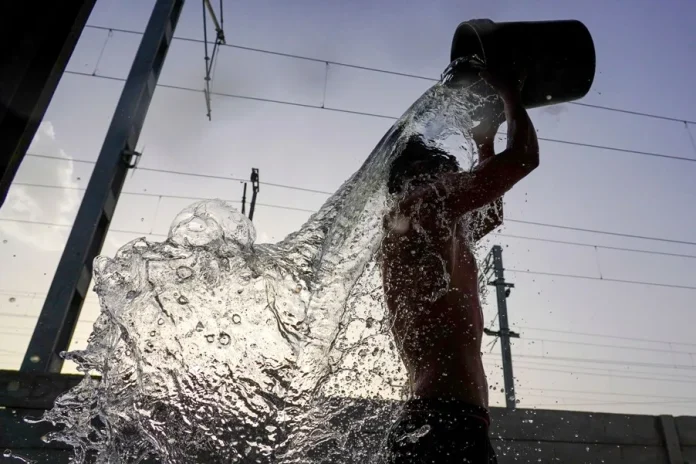NEW DELHI, June 9: As India faces increasingly severe and frequent heatwaves, the true human cost remains unknown due to fragmented and unreliable data collection systems. The lack of accurate heat-related death records is weakening public awareness and policy response, leaving thousands of vulnerable people uncounted and uncompensated.
On a scorching May afternoon last year, a ragpicker collapsed in Delhi’s Ghazipur area from apparent heat exhaustion. Witnesses say he was rushed to the hospital but declared dead on arrival. With no official confirmation of heat as the cause, his death went unrecorded and his family received no compensation—just one of many similar tragedies across India.
An investigation by PTI reveals that India’s heat-related mortality data is scattered across multiple government bodies with conflicting numbers. The National Centre for Disease Control (NCDC), National Crime Records Bureau (NCRB), and the India Meteorological Department (IMD) each publish data on heat deaths, yet report significantly different figures.
Between 2015 and 2022, the NCDC recorded 3,812 heat-related deaths under its Integrated Disease Surveillance Programme (IDSP). In contrast, the NCRB reported 8,171 deaths from “heat/sunstroke,” while the IMD recorded 3,436 heatwave-related fatalities. The discrepancies point to systemic failures in data collection, reporting, and inter-agency coordination.
A senior Delhi Police official noted that NCRB data mainly includes deaths reported by police and confirmed via autopsy, while the NCDC only counts patients who died in hospital settings. States are mandated to report data to the NCDC, but many—including Delhi, Uttar Pradesh, Rajasthan, and Tamil Nadu—failed to do so in recent years, resulting in serious underreporting.
In 2022, for example, the NCRB recorded 730 heat-related deaths, while the NCDC logged only 33. In 2021, the figures were 374 and zero, respectively.
Health ministry officials admit the shortcomings. One official explained that the lack of a unified, electronic system makes confirming and reporting heat deaths difficult. Most hospital records are manually entered, making real-time surveillance almost impossible. Staff shortages and poor compliance further compound the problem, with some hospitals failing to report cases when temperatures temporarily drop.
Even the government’s digital tool, the Integrated Health Information Platform (IHIP), relies on manual data input, lacking automation from hospital databases. Experts argue that without strengthening death-reporting mechanisms, it’s impossible to effectively plan for or respond to deadly heatwaves.
Soumya Swaminathan, Advisor to the Health Ministry, emphasized this issue during the India Heat Summit 2025, calling for an overhaul of the death registration system to inform policy decisions accurately.
Abhiyant Tiwari, Lead for Climate Resilience and Health at NRDC India, noted that globally, attributing deaths directly to heat is a challenge. He advocates for using “all-cause mortality” data during heatwaves to estimate excess deaths—a more reliable method than current official records.
Environmental activists also called for urgent reforms. “Discrepancies between departments and widespread underreporting mean the true toll of extreme heat often remains hidden,” said Avinash Chanchal, deputy programme director at Greenpeace South Asia. “Until India fixes its fractured data system, the dead will remain just a number—or worse, not counted at all.”
As climate change accelerates and heatwaves grow deadlier, experts warn that without accurate data, India’s ability to protect its most vulnerable citizens remains dangerously inadequate.

